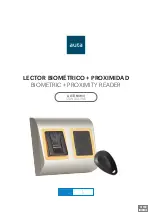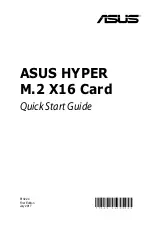
Table 3 - Typical Read Distances for Various Allflex Eartags
Tag Type
6 VDC
(81 dBuV/m @10m)
12 VDC
(87 dBuV/m @10m)
HDX/HP Eartag
28 cm
35 cm
HDX/LW Eartag
22 cm
30 cm
FDX-B/HP Eartag
24 cm
27 cm
FDX-B/LW Eartag
20 cm
24 cm
Note 12
- Figures listed in Table 3 underneath input voltage levels represent field strength
levels. It is the user’s responsibility to ensure that the Stick Reader is operated within the legal
power limits regulated by the local telecommunications authority.
Read Range Performance
Tag readers are frequently assessed with respect to performance by their reading distance.
The read distance performance of the Stick Reader will be affected by the following:
Transponder Orientation - For maximum reading distance, the axes of the transponder and
reader antenna coils must be optimally oriented (see Figure 3).
Transponder Quality - Each manufacturer’s transponder differs in (a) the amount of exciter
signal energy necessary to sufficiently operate the transponder’s internal circuitry, and (b) the
signal level of the ID Code information that is returned to the reader. Consequently, it is
normal for transponders of a common type (FDX-B, for example) made by different
manufacturers to exhibit different read range performance characteristics.
Transponder Motion - Most portable readers have small antenna geometries, and
consequently produce small effective “read zones”. Portable readers are generally designed
for reading transponders under quasi-static conditions. Transponders that are moving quickly
past the reader may not be present within the reader’s read zone sufficiently long for all the ID
Code information to be obtained.
Transponder Size - Physically larger transponders generally contain larger receiving coils
which produce longer reading distances than smaller transponders.
Transponder Type - HDX transponders generally exhibit greater reading distances than FDX-
B transponders of comparable size.
Proximal Metallic Objects - Metal objects located near the transponder or Reader can
attenuate and distort the electromagnetic fields generated in RFID systems, and thus diminish
read distance performance.
Electrical Noise Interference - RFID transponders and readers use electromagnetic signals as
a premise of operation. Other electromagnetic phenomena – radiated electrical noise from
computer displays, for example – can interfere with the transmission and reception of RFID
signals, and consequently reduce reading distance.
Transponder/Reader Interference - Multiple transponders within the sensing range of the
reader, or other readers emitting excitation energy in the immediate vicinity can adversely
affect the reading performance or prevent operation of the Stick Reader.
6
Interpreting Tag ID Code Information
Table 2 lists the default data formats that are transmitted from the Stick Reader’s
serial communications port, in response to reading compatible type tags. For ISO
type tags, there is no contextual differentiation between HDX and FDX-B outputs.
Both types of tags produce a default format:
LA_982_000001088420<CR><LF>
where the underscore “_” represents a space character, and <CR><LF> is a carriage
return /line feed (unprinted control characters which cause a PC’s display cursor to
jump to the beginning of the next line prior to displaying the next ID number).
In the above data output, the prefix “LA” represents “Line mode – Animal coded
read only tag”, “982” is the Allflex manufacturer number assigned by ICAR, and the
last 12 digits comprise a unique number sequence for this particular transponder.
The TIRIS S2000 output format has become a de facto standard for many users, and
appends the
reserved field
and
data block
bits contained in the ISO coded eartag to
the Stick Reader’s default format, causing the ID code information to appear in the
format:
LA_00000_0_982_000001088420<CR><LF>
This output is easily configured using either the
Configurator®
utility, or by issuing
the Command “BE40239” to the Stick Reader (See Serial Command Language on
page 8).
Note 13
- The manufacturer code “982” will be different for another manufacturer’s tag, and
can also be replaced by an ISO country code or abbreviation (“250” or “FRA” = France, for
example). When other manufacturer codes or country codes exist, there can exist the same 12
digit ID number.
Note 14
- While HDX and FDX-B type transponders have an identical context, they are
guaranteed by Allflex to be unique. That is, HDX tag type ID numbers are never duplicated in
FDX-B type tags.
For HDX Industrial coded tags, the output format is:
LR_0006_0000000018514348<CR><LF>
In this tag format, the prefix “LR” represents “Line mode – industrial coded Read
only tag”, “0006” is an application code unique to Allflex, and the last 16 digits
comprise a unique identifying number sequence.
The above default formats can be changed using the features described in the section
“Configuration Options” on pages 8 and 9 of this guide.
7
























